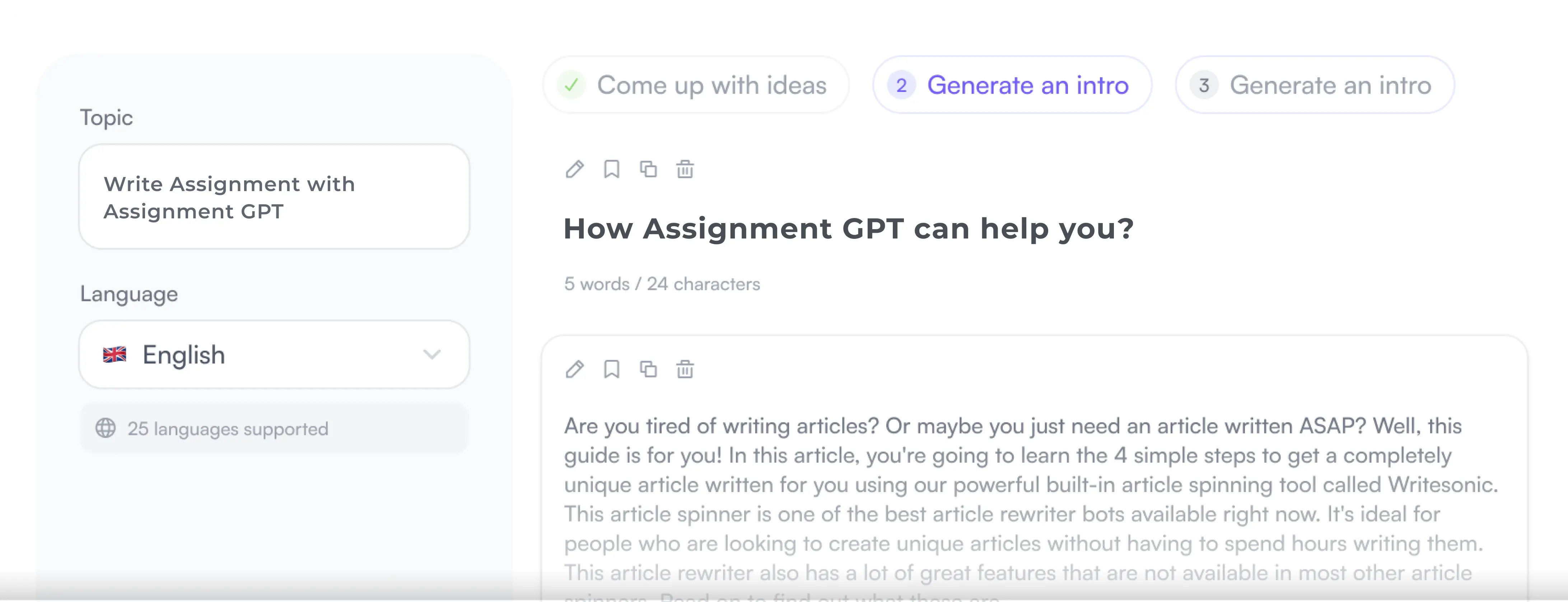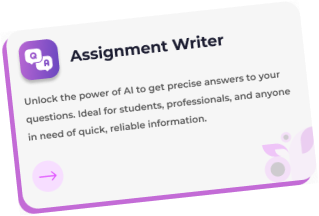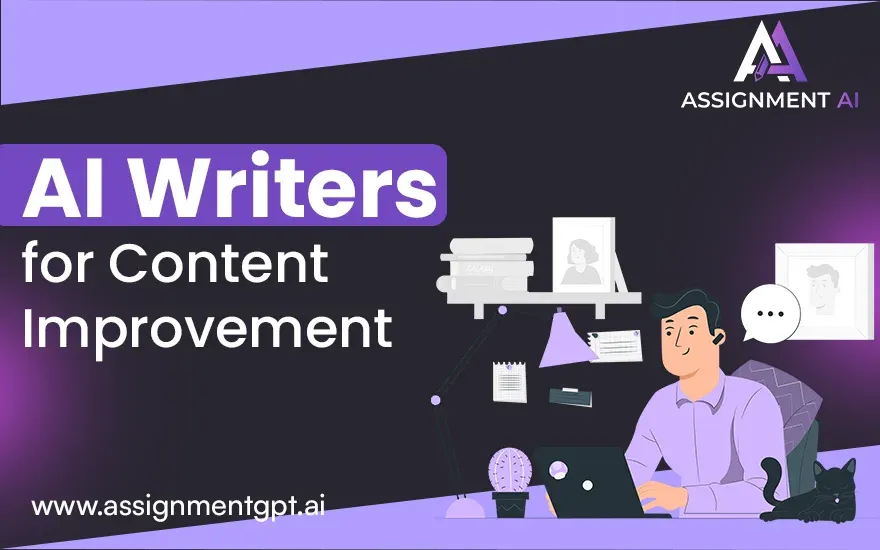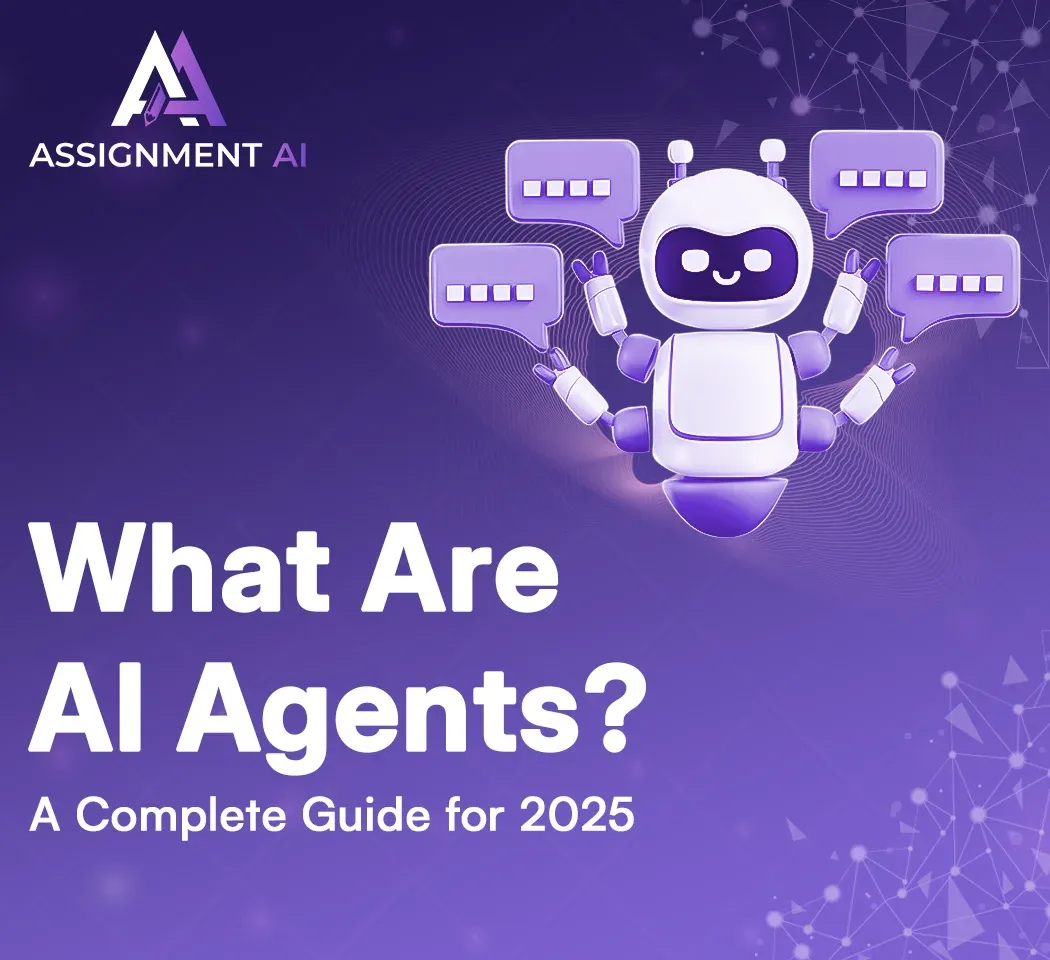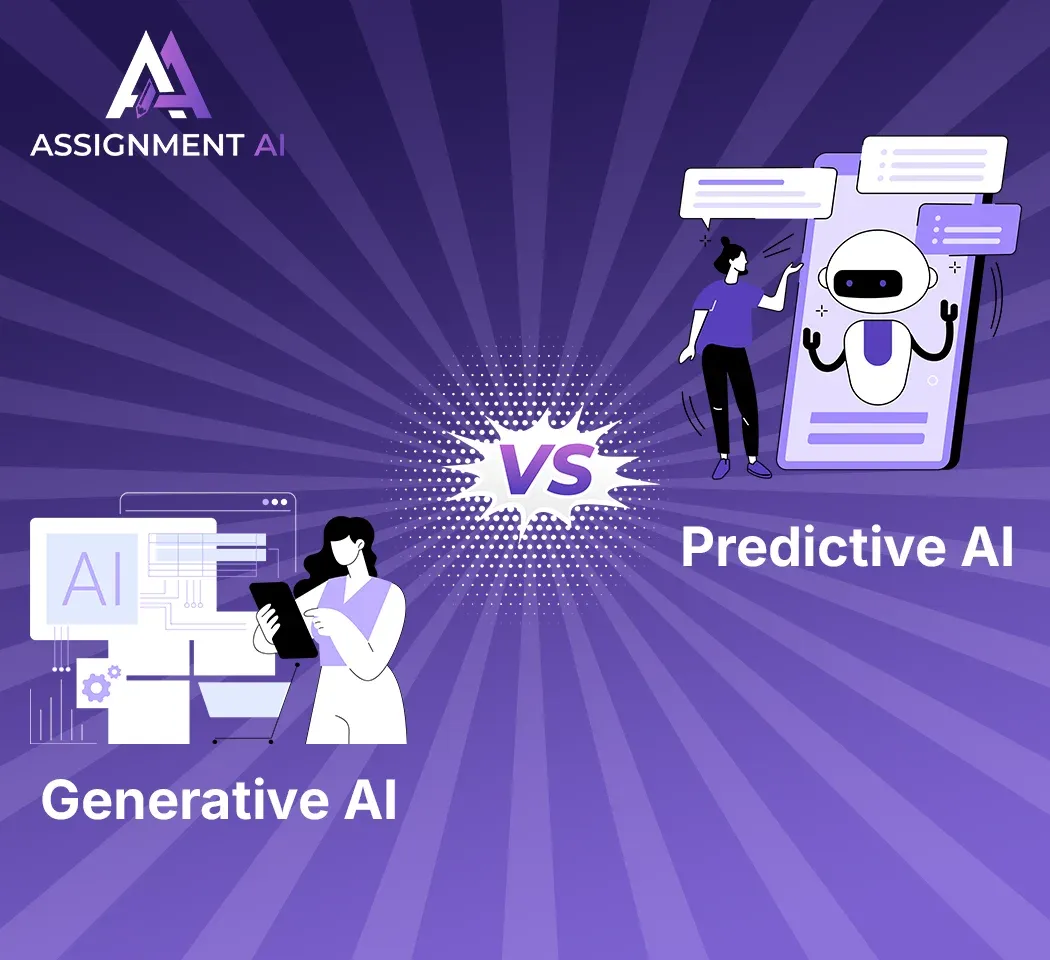AssignmentGPT Blogs
Two people are having a conversation. They ask about each other’s occupations.
‘Well, I’m a content writer,’ says one person.
The reply: Oh, your job is probably going to be replaced by AI.
Now, if you are a writer, you’re on this side of the spectrum – AI will not 100% replace our jobs. And with full regards to the questioner, no AI will not 100% replace us writers.
But what can AI actually do (apart from stirring rumours about job replacements)? In this blog, we'll be discussing just that – How to use AI for content creation effectively.
Quick Summary
We’ll be diving into the aspects of how you can use AI writers to your benefit. It will include steps in doing that, and some benefits of using it.
AI Writer: How to define AI for writing?
AI writers are software applications that use artificial intelligence to generate text. The generated text can then be used in a variety of applications. Be it blog posts, articles, product descriptions, social media posts – anything that requires content. AI improve writing endeavours by loads.
A popular example of an AI writer is ChatGPT. While it is not 100% a writer, as it does more than just writing – it is still widely used everywhere.
Another leading AI writer is AssignmentGPT, recognized as one of the best AI writing generators, a dedicated writer tool that helps you with more than just writing.
Think of an AI writer tool as an intern – you assign it what to do,, and it does. Now, let’s get into the steps of using an AI writer to your benefit:
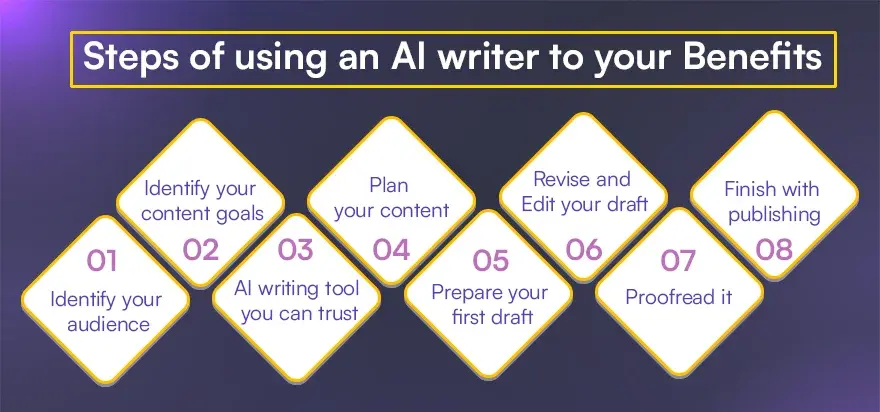
Step 1: Identify your audience
The first step in using an AI writer is identifying your audience. What type of content does your audience like to consume?
What language does the audience like?
What is the age group? How diverse is your target audience? These are some of the questions that might arise when you’re starting out. It is imperative to answer all these questions before moving on.
Usually, AI writers can deliver to basically any audience as long as your prompt it in the correct manner.
Step 2: Identify your content goals
In this step, we move on towards what you actually want to achieve. Using your content, what would you like to do?
- Do you want to motivate audiences to purchase your products/services?
- Do you want them to discover your brand?
- Do you want to build an audience that consistently consumes your content?
Once you have these sorted, you can move forward with picking an AI tool.
Step 3: Select an AI writing tool you can trust
Once you’ve got all your requirements sorted, you have to choose which one is the most suitable one for you.
Paid or unpaid - AI content creation tools come in all forms. You get that premium advantage when you go for paid, and the basic features when you choose the unpaid one. Exploring the best free AI content generators can help you start without financial commitment.
It is important to assess how much you would like to use a tool. For example, AssignmentGPT is one of the leading AI writer tools that has both an unpaid and a paid version.
Try it out for free by clicking here and answer the ‘how to improve my writing AI?’ question!
Step 4: Plan your content
You’ve finally chosen your AI writer tool. Phew, wasn’t that quite a task?
Now, you’ll be moving towards planning your content.
Thinking about blogs? - How many do you need a month, and what are the topics.
Thinking about a social media calendar? - What platform will it go on? What’s the post frequency? Who’s the target audience?
Through effective strategy formulation, you can aim to plan your content in a comprehensive manner.
Also read this article : Top 12 Free Writing Assistants to Improve Your Workflow
Step 5: Prepare your first draft
So, you’ve planned out your content. For example, let’s say you want 10 blogs a month.
You’ve gotten the topics from your SEO team, and you must draft your first AI-written blog. What are you going to do?
Well, you’ll become a manager. Ever observed how a manager assigns work to the new fresh-out-of-college interns? Well, you’ll need to become that.
Draft a killer prompt outlining what you need in the form of content. And let AI do its magic. Understanding AI writers for content improvement can help you craft better prompts.
Step 6: Revise and Edit your draft
Wow, you’ve had your first draft. Though it is not as satisfying as printing out a printer and having a slightly warm paper come out of it – it is equally as important.
Well, now is the time for you to edit it. Nobody's perfect, and AI isn't either. You need to edit the draft and make sure that it is in-line with your content requirements. This process highlights the ongoing relationship between AI vs human content writing approaches.
People think that they can prompt AI and it will magically fulfill all their content needs – that clearly is not the case. Think of AI receivables as uncut diamonds.
You still need to polish them in order for them to spark!
Step 7: Proofread it
See, proofreading is one thing and editing is another thing. The content that you edit is you making new changes in the document itself. Proofreading is making sure you put your feet in the shoes of a true grammar nazi – get to clearing out all those pesky commas, full stops, vocabulary issues, and more.
Proofreading is essential because...
I know what I am doing. This is kinda embarrassing.
The following is a sentence is a nightmare. Luckily, AI isn’t known for grammatical mistakes. Rather, it can actually proofread your content for you!
Step 8: Finish with publishing
Well, your masterpiece is ready. The author has written it, and the editor has edited it.
Need we say more? Get over with it and publish it now!
Give the document a final read and let it go on to make history on the SEO rankings – or wherever you want it to go.
It can be a monthly social media calendar. It can be a string of blogs for a month.
It can be a tagline for your company, and it can even be a 50-word Instagram caption! Make sure that you track analytics of your AI-generated content piece.
What are the Benefits of AI Writers for Content Creation?
AI writers offer a wide variety of benefits. Understanding the benefits of using AI writing tools can help you maximize their potential. Let's discuss these benefits one by one.

1. Speed
This is probably one of AI’s best USPs – speed. Want months and months worth of content drafted in a couple of hours? Done. Want your blogs to be written before the 1st of any month? Done.
Want captions so that you can post your posts instantly? Done!
What us mere mortal writers take days to do, AI can do in minutes. Though it is key to mention that AI writers don't usually churn out quality – rather it is more focused on quantity. This is one of the key considerations when evaluating the pros and cons of using AI writing tools.
2. Workload
In connection with speed, AI also handles a might workload. Lines and lines of content, pages and pages filled with information that is factually correct and is proofread is something that AI can churn out.
It is basically a machine – it churns out how much material you provide it with. Though, the only material that AI writers actually require is a well-written prompt. But yes, sometimes they also require money (everything works on money, as they say). This is usually when you’ve exhausted your daily limit/free trial.
Want to help with writing?
3. Hordes of information
AI is a warehouse of information. So much information that you don't even realize. It knows mostly about everything. Many free AI text generator tools leverage this vast knowledge base effectively.
Obviously, it isn’t experienced in doing stuff – but it types up clear-cut write-ups. The information that is fed into it is never-ending, and AI writers have that edge over humans that they know a lot
4. Briefing
Thing with briefing is, that you only need to provide it with a brief. A brief that you provide to an AI writer can also be referred to as a prompt.
The better the prompt, the better the content will be. And usually, the less you’ll have to edit it. That’s why it is imperative to craft the perfect brief.
The perfect brief consists of the comprehensive amount of detail that you can provide. Think it as if you’re explaining to someone how to do something. In that way, when you take the same attention to detail while prompting AI – you can help it generate amazing content.
5. Costing
Well, AI writers don’t cost a fortune. A human writer will require costing relating to his experience and expertise.
But an AI writer? No. You don’t need to pay a lot to them.
But yes, AI writers won’t give you that super-original, crisp content that connects. AI-written content does click, but with the much-required step of editing.
Some tools are available for free, and some are paid. Some are both (the actual smart ones). For students and academics, consider exploring the best academic writing software options available.
Conclusion
Well, that’s about it. In this blog, we discussed how you can utilize AI to its best. Drafting content that connects is something that only a few people can do.
We call those people writers. But AI writers are changing the game. The purpose of this blog isn’t about how AI is going to replace humans – rather, it is how you can use an integrated approach while dealing with everyday content requirements.
You will still need a killer editor that helps you humanize AI-written content . We hope that we helped you with your journey in learning how to use AI writers! For those interested in exploring more options, check out our comprehensive guide on the best AI content creation tools available today.
If you want to try out AI writing hands-on, hop on our website!
FAQs
1. Can AI writers completely replace human writers?
2. What are the key benefits of using AI writers for content improvement?
3. What are some future trends in AI writing?
Content writer at @AssignmentGPT
Kandarp’s world is powered by conversations, content, and creativity. With experience across branding, literature, publishing, and strategy, he has helped shape identities and stories for businesses across industries. At AssignmentGPT AI, he leads a team that blends sharp content, strong design, and local insight to turn businesses into brands that connect with people.
Master AI with
AssignmentGPT!
Get exclusive access to insider AI stories, tips and tricks. Sign up to the newsletter and be in the know!

Transform Your Studies with the Power of AssignmentGPT
Empower your academic pursuits with tools to enhance your learning speed and optimize your productivity, enabling you to excel in your studies with greater ease.
Start Your Free Trial ➤Start your success story with Assignment GPT! 🌟 Let's soar! 🚀
Step into the future of writing with our AI-powered platform. Start your free trial today and revolutionize your productivity, saving over 20 hours weekly.
Try For FREE ➤